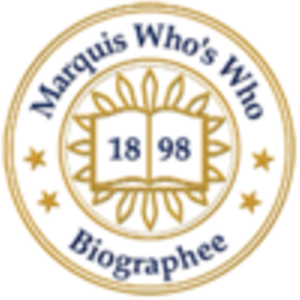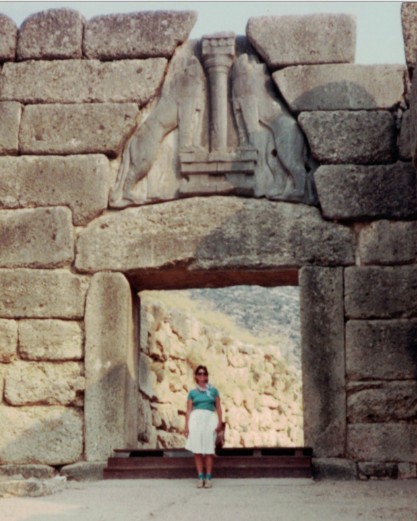CINCINNATI, OH, August 01, 2016 /24-7PressRelease/ -- Dr. Thea Katharine Lewis Smith has been included in Marquis Who's Who. As in all Marquis Who's Who biographical volumes, individuals profiled are selected on the basis of current reference value. Factors such as position, noteworthy accomplishments, visibility, and prominence in a field are all taken into account during the selection process.
Experienced in all aspects of archaeological research, Dr. Smith has participated in site survey, excavation, artifact processing and artifact analysis. An internationally recognized archaeologist, her profession has led her to investigate sites and cultures in both the Old and New Worlds. In Central America she worked as reconnaissance assistant, seeking sites of early Maya habitation for the Belize Archaeological Reconnaissance project, directed by Professor Richard S. "Scotty" MachNeish. She served as director of the field crew for preliminary survey and excavation of the SS Tennessee, a gold rush schooner that sank in the fog off the Marin headlands in California. In Belize she worked as director of artifact processing at the early Maya site of Cuello, and as lab director and camp manager for the later Maya site of Nohmúl. She was unit supervisor at the Miwok Native American site Marin-17, and trench master at the Bronze Age Greek citadel of Midea, where she also served as special assistant to the geologist and special assistant to the director, in addition to doing independent research on Bronze Age Greek systems of water management. Professor Smith has designed and led travel-study programs for undergraduate students, giving them the opportunity to investigate first-hand many archaeological sites and museums throughout Greece.
Over the last three decades, Dr. Smith has dedicated her career to all aspects of classics and archaeology. With her reputation for excellence in fieldwork preceding her, she has recently transitioned to a predominately educational role in order to share her insights and expertise with the next generation of scholars. "Of course I enjoy teaching in my chosen field of classical archaeology," she says, naming courses such as the "archaeology of ancient Greece, archaeology of Egypt, and archaeology of Rome, as well as the history of ancient Egypt." She also teaches introductory and intermediate ancient Greek and Latin languages and literatures, where she enjoys the opportunity to see students master languages very different from our own. Because of her broad array of interests and experience, she has been invited to teach courses outside the standard boundaries of classics. "I have taught ancient, medieval, and modern art history," she relates, "and it's exciting to see the developments in artistic techniques and styles that occur over time - from cave paintings to classical Greek sculpture, from Gothic and Renaissance architecture to Impressionist paintings." Due to her expertise in anthropology, she was invited by the Anthropology Department to teach world prehistory, origins of civilization, and the archaeology of the Maya. "It was a delight to be able to draw on my Maya fieldwork for my lectures," she exclaims, "and I enjoyed comparing the anthropological approach to archaeology with the approach traditionally used in classics."
The Classics Department, Dr. Smith adds, has also encouraged her to expand beyond the usual boundaries. "I teach Greek and Roman myth and religion, as is typical for a classicist," she says, "but in addition, I also teach Celtic and Norse myth and religion, and Egyptian and Mesopotamian myth and religion. These cultures, on the boundaries of Greek and Roman civilizations, are often overlooked in classics but they can add significantly to our understanding of the ancient world. Moreover, they are fascinating to study!" she exclaims. "They challenge many of our assumptions about the functions of gods, priesthoods, and religious beliefs within a culture." Another course that transcends the usual boundaries is one of Professor Smith's favorite: mortals, myth and magic in ancient Greece.
"I especially enjoy teaching this course, as it always ignites debates and inspires new questions and ideas in the minds of my students," Dr. Smith comments. She describes the basis of the course: "students read original ancient Greek and Roman texts in translation and I bring in additional information such as different original texts for comparison, or the debates and conclusions current in modern scholarship, or findings from archaeology that pertain to the readings. I augment my archaeology lectures with pictures that show magical objects, magical places, and may even give a hint of magical practices." The lectures, readings and pictures, in combination, form the basis for lively and animated class discussion. "For example," she explains, "we might ask, 'What is the purpose of this particular magical practice? How does it function in society as a whole?' Or when we read a description of a magical ritual, we analyze it to ascertain what magical principles and beliefs it is based on." Professor Smith challenges her students to find a definition of magic and then see whether it applies to ancient beliefs and practices. "We compare ancient written accounts of magic with evidence from archaeology, to see where they agree and disagree," she notes. "Then we consider how to evaluate the reliability of different kinds of evidence and how to judge the validity of different interpretations," she explains. "By the end of the term, I'm delighted to see that my students have a good basis for examining this concept of magic which, although not always taken seriously in our own culture, was highly important in ancient Greece and Rome, as shown in their literature and stories, in their political structure, and in the daily lives of ordinary people."
Professor Smith points out the recurring theme of magic in literature: the early epic poetry of Homer's Odyssey describes a witch named Circe who uses a wand and a magic potion to turn men into swine. In a later history, we find that Periander, the tyrant of Corinth, sends an embassy to an oracle of the dead to ask his deceased wife Melissa where to find an item he has lost. She knows the answer but will not tell him; she is angry because her clothing was not properly burned at her funeral and did not survive the journey to the underworld, leaving her with nothing to wear in Hades. Only after Periander has burned the best clothing of all the women in his city as a special offering to Melissa, will she tell him the answer he seeks. "But magic is not confined to literature," Dr. Smith explains. "In both Greece and Rome, curse tablets, usually made of a thin sheet of lead, were a magical technique frequently used by ordinary people. The tablet could be dropped down a well or placed in a grave - both access points to the underworld -- in hopes of attracting a lover, defeating a business rival, or even gaining victory in a chariot race on which the person had bet money."
For the fall term of this coming academic year, Professor Smith will be teaching another course she especially enjoys: myth and religion of Egypt and Mesopotamia. "The literature is fantastic," she exclaims. "From ancient Sumer we have stories of gods and goddesses and their interactions with each other and with human beings; in Egypt, there are texts to help the king's spirit survive the dangers of the journey to the afterlife. And of course it's always exciting to study the pyramids and ziggurats." In the spring, she notes, she will teach another favorite: Celtic and Norse myth and religion. "One topic for debate is whether these cultures practiced human sacrifice," she says, "and if so, for what reasons. Another vital issue is to what extent Roman authors provide reliable accounts of Celtic and Norse cultures: their myths, beliefs and religious practices."
A veteran traveler, Dr. Smith always tries to learn the language of the country where she is working. "I know some French, German, Spanish, Italian and modern Greek, although I'm far from fluent," she confesses. "I know enough to get things done, and I find that most people are willing to help me learn their language." When she led a tour group to the Bronze Age citadel of Tiryns, she introduced her group to the site overseer and showed him her permits as tour leader, speaking in her best but no doubt flawed Greek. Afterwards, the site overseer told her students, in perfect English, that she spoke "beautiful Greek"! "I know I didn't deserve it," says Professor Smith, "but I'll never forget his kindness and generosity."
Professor Smith's successes are derived from her own academic achievements. She holds a Ph.D. in classics from the University of Cincinnati, a Master of Arts in classics and classical archaeology from San Francisco State University, and a Bachelor of Fine Arts from California College of Arts & Crafts; in addition she spent two years studying the Great Books at St. John's College in Annapolis. At San Francisco State University, Dr. Smith was chosen to be the Master's hood recipient and honoree; at commencement she led the procession of all the students and she alone was hooded by the dean on behalf of all Master's Degree recipients in all fields of study in all departments in all colleges within the university. While teaching at the University of Cincinnati, she was honored by the dean of McMicken College of Arts and Sciences for outstanding academic achievement.
She remains at the top of her field and keeps her courses lively by continually seeking out new topics for research. Her interests include Bronze Age Aegean archaeology; the early civilizations of Egypt and the Near East; ancient religious beliefs and practices; sex and gender in ancient Greece, Rome and Egypt; and the roles of magic in ancient society. In the future, Dr. Smith plans to continue teaching in the Classics Department at the University of Cincinnati.
About Marquis Who's Who:
Since 1899, when A. N. Marquis printed the First Edition of Who's Who in America, Marquis Who's Who has chronicled the lives of the most accomplished individuals and innovators from every significant field of endeavor, including politics, business, medicine, law, education, art, religion and entertainment. Today, Who's Who in America remains an essential biographical source for thousands of researchers, journalists, librarians and executive search firms around the world. Marquis now publishes many Who's Who titles, including Who's Who in America, Who's Who in the World, Who's Who in American Law, Who's Who in Medicine and Healthcare, Who's Who in Science and Engineering, and Who's Who in Asia. Marquis publications may be visited at the official Marquis Who's Who website at www.marquiswhoswho.com.
# # #
Contact Information
Fred Marks
Marquis Who's Who Ventures LLC
New Providence, NJ
USA
Telephone: 844-394-6946
Email: Email Us Here
Website: Visit Our Website




